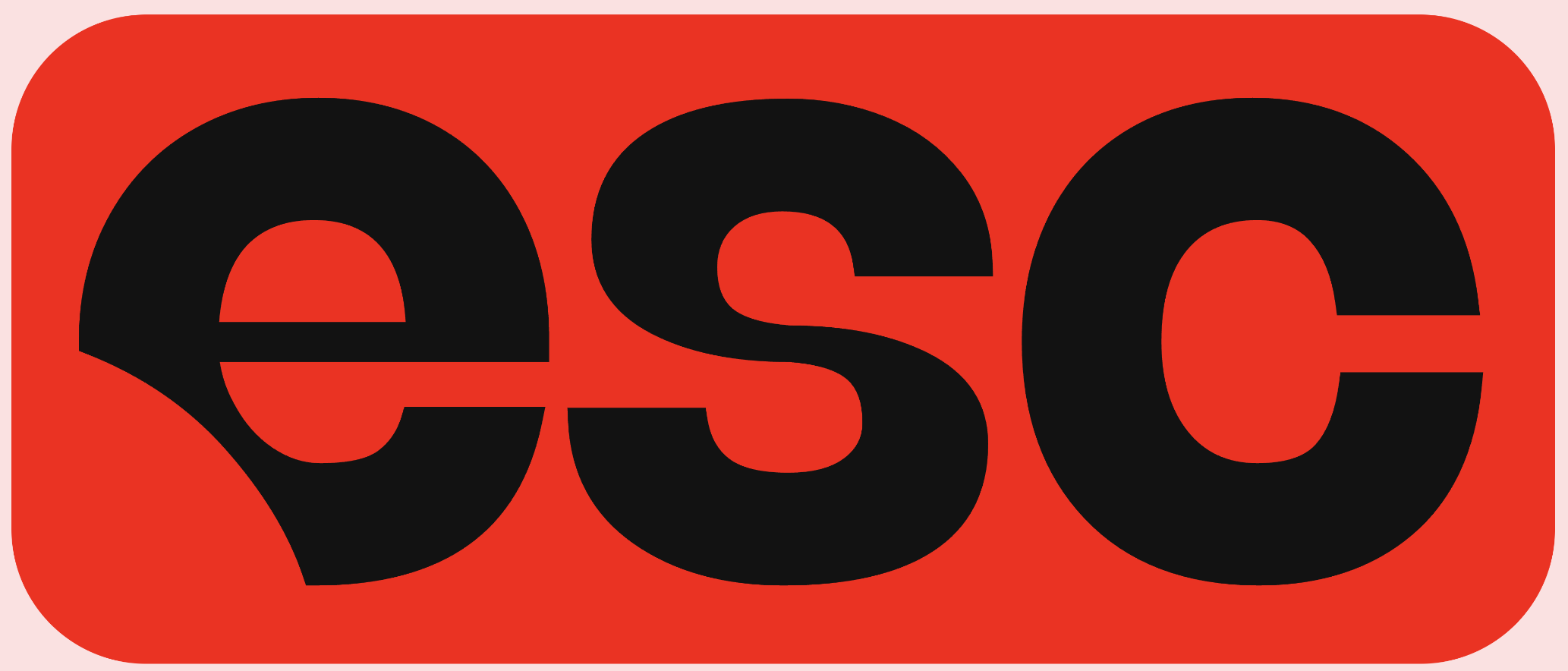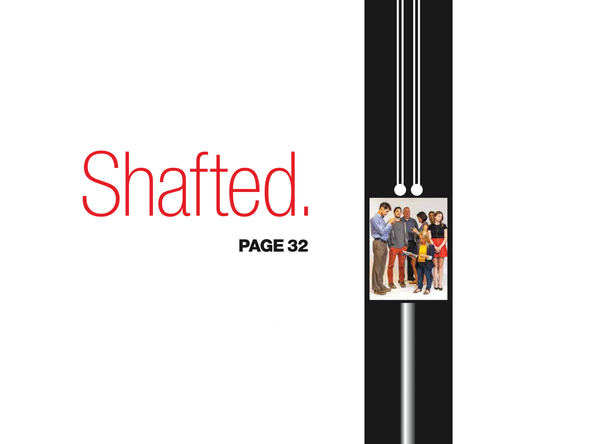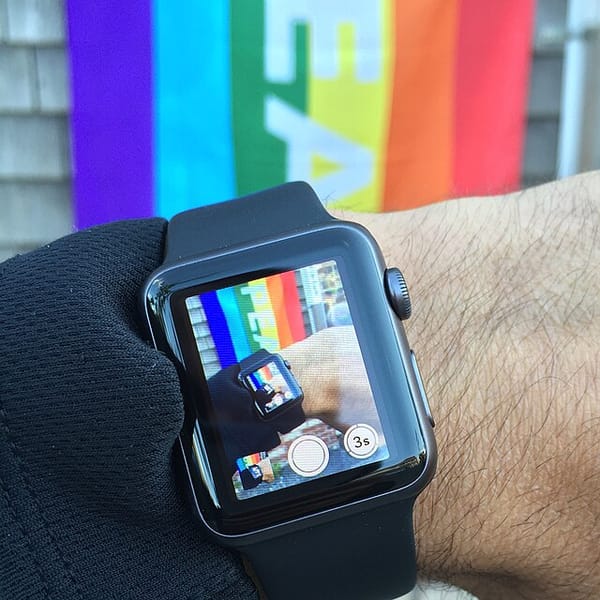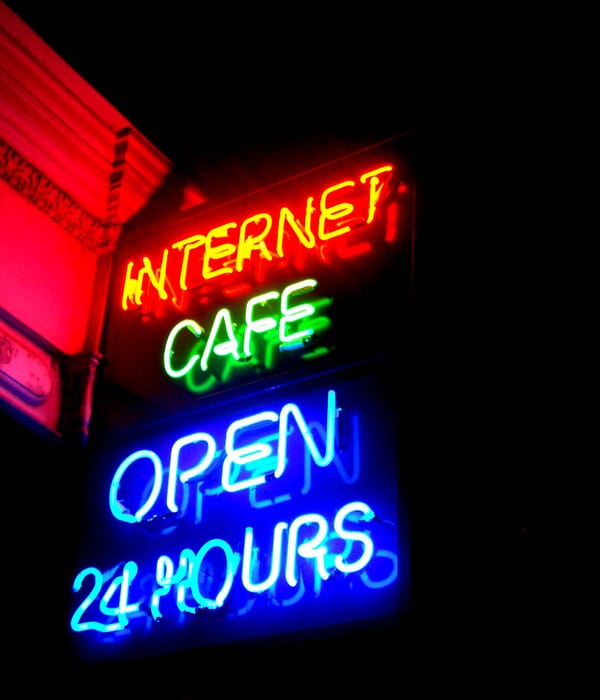How creative workers can call out climate bullshit — and sleep better than, say, Edelman’s CEO
Big agencies rake in cash from fossil fuel clients while brands delete climate and diversity commitments. But creativity can be a solution, too. The Clean Creatives movement’s playbook — plus a spoof wellness app called Oilwell that’s trolling an F-List PR firm — show workers some ways to push back.

Behind every bit of climate disinformation is a creative strategy, an agency, and a media outlet or social platform taking the fossil fuel industry’s oily money. Ending the creative pipeline can be a climate solution, say the thousands of workers who have taken the Clean Creatives pledge.
I’ve spent the past few weeks chatting with the movement’s organizers, volunteers, agency leaders and comedic climate campaigners to map how we can call out the bullshit, find community and put our creativity to better use.
I also attempted to fall asleep using a new wellness app that resulted in me feeling very tired the next day.
Put on a pot of coffee. Let’s begin with me sleepless in my grungy flat at approximately 3 a.m.

How does Richard Edelman sleep? I tried to find out but have no answers
I could not sleep. I opened my eyes again and my bedroom ceiling had turned a paler shade of gray, the cloudy London sky out my window tinged with the early morning moon. I didn’t want to know how many hours I’d observed the slight tonal shifts in the lighting while rotating to back sleeping, right side, left side, back to back.
It’s relevant to know that I’ve always struggled with “sleep hygiene,” what my fittest friends say when they mean “sleeping well.” I’ve got bedtime reminders that ding on my devices at 12:30 a.m., which I, um, sometimes ignore. I gave up long ago on surveilling my own body by tracking my sleep with a smartwatch — its significant amounts of sleep-stage data I also ignored. During lockdowns in 2020 and 2021, when alarming headlines raced through my anxious brain in the middle of the night, I’d tried the Calm app’s sleep stories to quiet the noise. But I’d instead hyperfixate on the plotlines and the exaggeratedly chill ASMR accents (to this day, I hear the French Whisperer haunt my ears whenever I toss and turn). Most nights, I typically put on a classical piano playlist. But tonight, my inability to snooze was different, almost sinister. All because I wanted to know how the boomer nepo baby of the PR industry could sleep — and ergo, no concerto.
Rather, in the background, I heard the rustic and energetic thrum of a violent wildfire consuming a forest. And the siren-like whistle of a hurricane blended with the crackles of ancient old-growth woodlands burning, releasing their carbon into the atmosphere. I closed my eyes. Actual sirens looped. But it was the intermittent screams that were really getting to me. I opened this new wellness app I was using to simulate how the CEO of an agency making bank off of climate destruction might be sleeping. I tapped the sound mixer and slid down the volume on the enabled “ambiances” — the nasty cocktail of Wildfire, Hurricane, Sirens and Screams. Then I slid up another “ambiance” called Drilling to max. Could this one lull me into a relaxed state of climate denial? No, after a couple of seconds of that, I determined that there is no way I could sleep like Richard Edelman, CEO and son of the founder of Edelman.
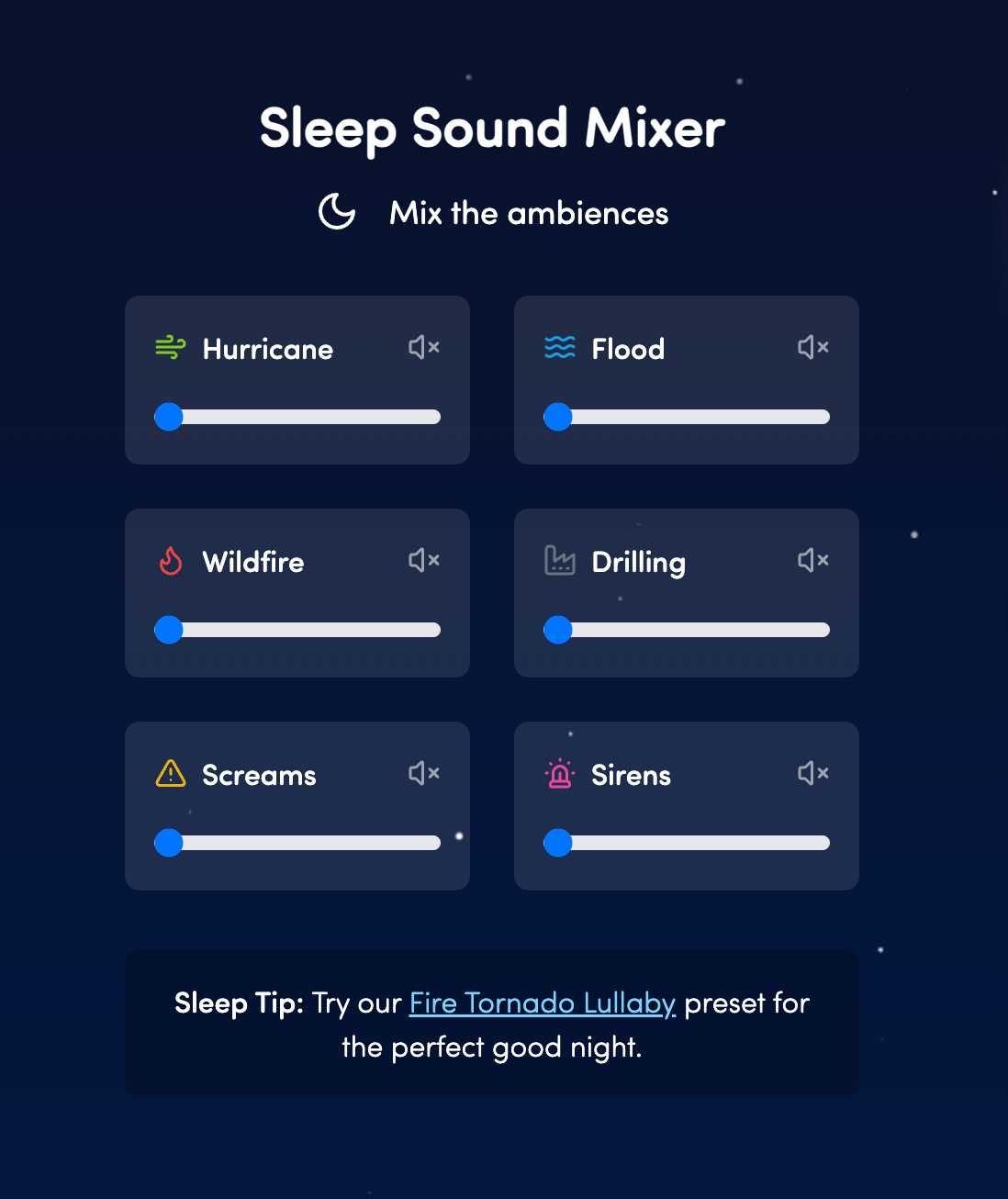
That’s the conceit of this newly released spoof wellness app, Oilwell, which climate campaigners have given the apt taglines, “Relax … it’s only the climate crisis” and “Oilwell is a wellness app to help you embrace climate chaos, created by Edelman, Oil and Gas PR.”
It’s a project by Serious People, a creative collective using satirical campaigns and subversive stunts to expose complicity and provoke action. “We’ve been obsessed for a while with the different ways in which all of us push the climate crisis out of our minds. Big oil PR firms like Edelman are extreme examples of this,” Jamie Inman, former brand strategist turned Serious People’s campaign director, tells ESC KEY .CO.
“Oilwell is satire but ‘relax, it’s only the climate crisis’ is pretty much the playbook.”
The “small but mighty” collective’s prior projects include Ogilvyland, a “fossil fuel funfair” which satirized the ad agency’s fossil fuel contracts, and the particularly elaborate Asset Manager Quest campaign, which centered on a custom-made video game solely created to “annoy fossil fuel financiers.” With Asset Manager Quest, Serious People went to Nathan Fielder-esque lengths to get as many as 600 employees at Abrdn, a Scottish firm, to play the game. Once Abrdn banned access to the web game, Oli Frost, Serious People’s creative lead, got a train north to Scotland. Frost strapped an arcade version of the game to his back and attempted to enter Abrdn’s offices, where security turned him away. “It might be quite funny if you wrestled me to the ground,” Frost told security, who declined on camera.
“As a group, we started Serious People to demand greater urgency from all the ‘serious’ institutions that are letting us down,” says Inman. “Oli had been doing climate comedy with some big hits on social media. I was looking for something new after dropping out of advertising.” (Among his climate comedy songs, Frost wrote one about Greta Thunberg, to which Thunberg even danced the Macarena.)
Launched earlier this month, Oilwell targets Edelman’s clients in the health and sustainability sectors, nudging them to drop Edelman.
“They pretend to care about their employees’ wellbeing while they work with polluting clients that are setting our future on fire,” Inman says. “Oilwell is satire but ‘relax, it’s only the climate crisis’ is pretty much the playbook.”
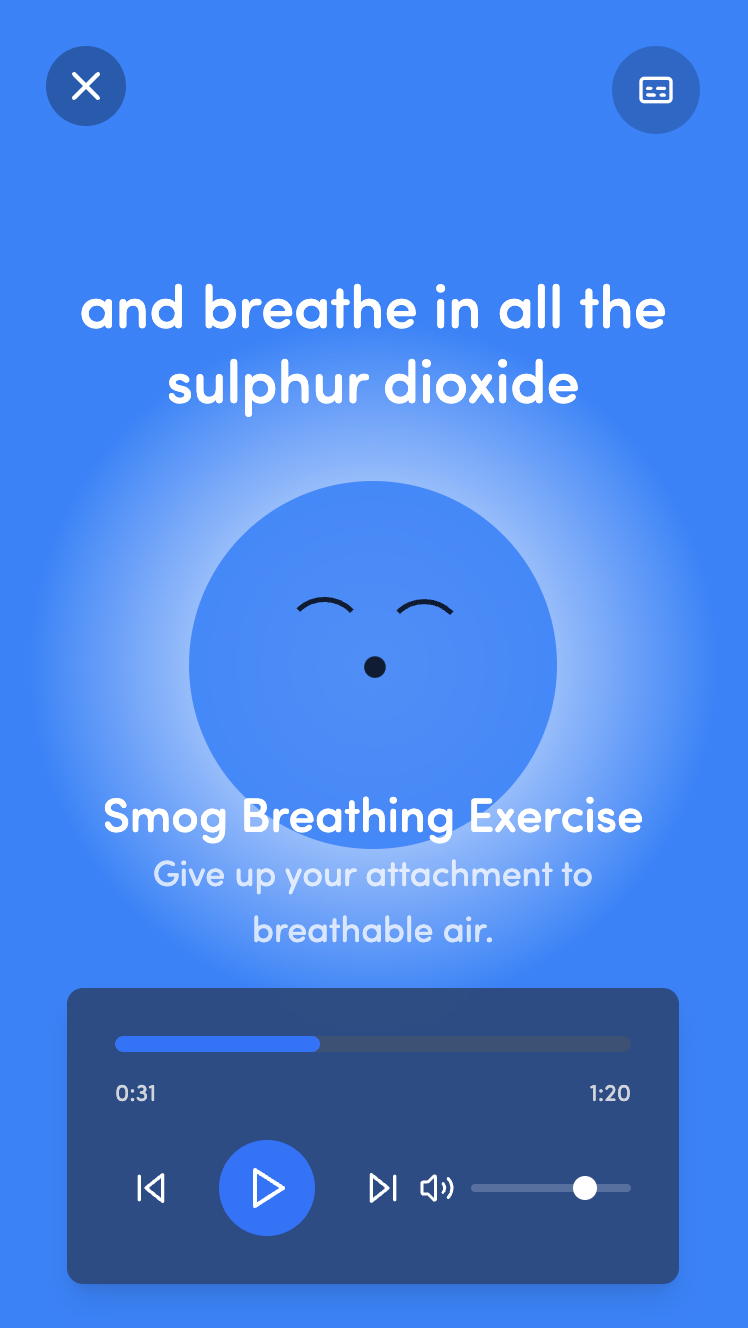
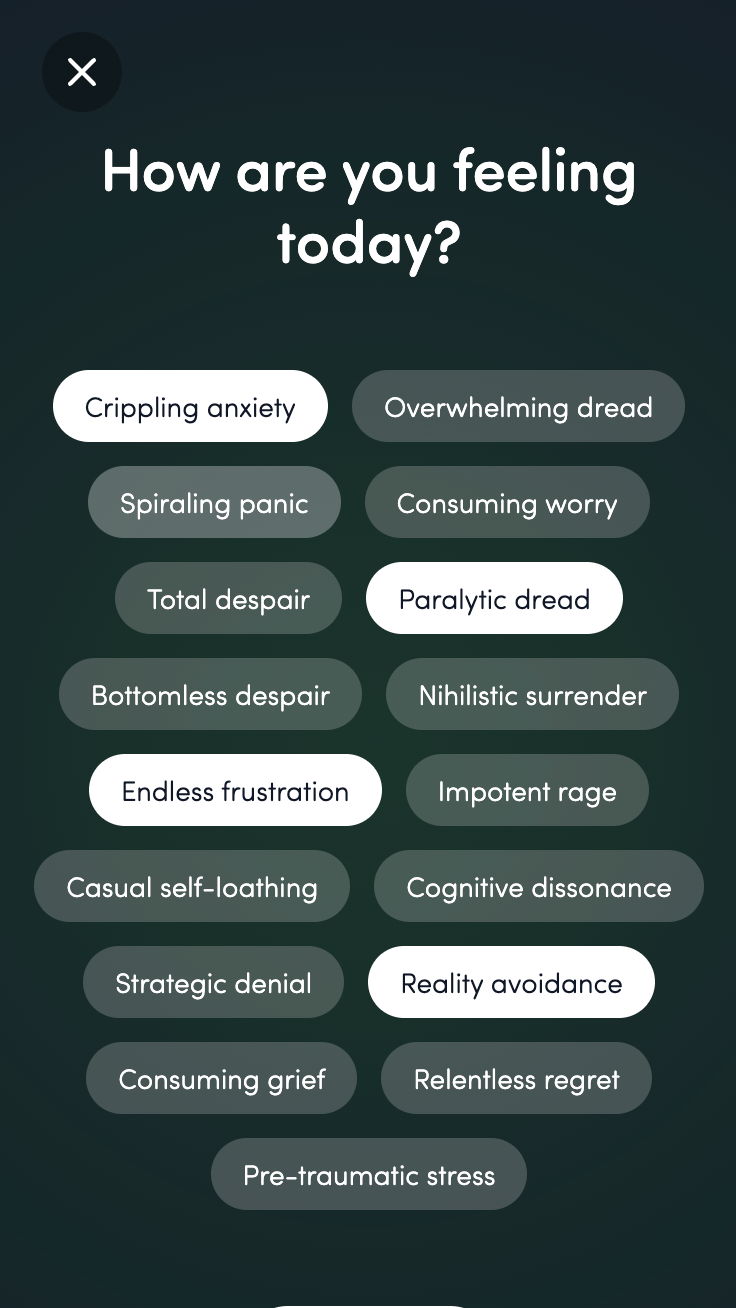
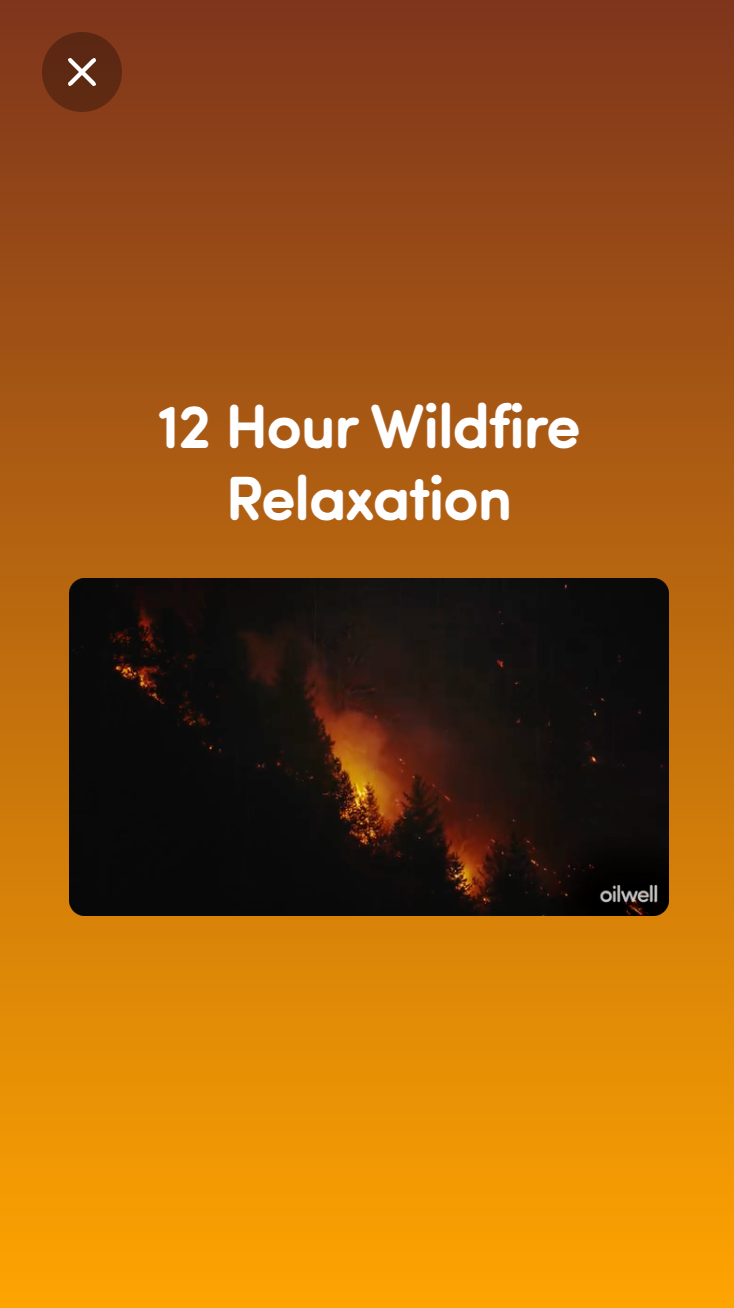
The Oilwell app's interface mimics popular wellness apps like Calm or Headspace, but with a dystopian twist. From guided meditations on 'breathing in sulphur dioxide' to mood trackers offering options like 'overwhelming dread' and 'nihilistic surrender,' the app's dark humor exposes how we're expected to stay calm while the planet burns.
The fully functional app resembles the slick, minimal user experience interfaces of popular meditation and mental health apps such as Calm or Headspace, with many of the same features including a mood tracker and guided meditations. But these are not your typical moods or meditations. Midway through writing this paragraph, I was feeling a bit anxious about the deadline. So I put in my headphones, took a walk in a park and tried a few of the Oilwell meditations including “Endless Growth Affirmation: Breathe in profit, breathe out responsibility;” “Smog Breathing Exercise: Let go of your attachment to breathable air;” and “Carbon Capture Dreams: Imagine solutions we’ll never really implement.” They didn’t calm me down.
I wondered again about Edelman’s CEO, if he had access to some effective lobotomy-like brain surgery that let him go about his day without even the slightest bit of regret that his company provided the spin doctors the fossil fuel industry relied upon to distort reality. Indeed, Edelman is “perhaps the most notorious PR agency for its fossil fuel interests,” according to Clean Creatives, a global initiative that aims to end the creative industry’s association with fossil fuel polluters. Each year it publishes its agency F-List, highlighting Edelman as chief among “the mad men fueling the madness.”
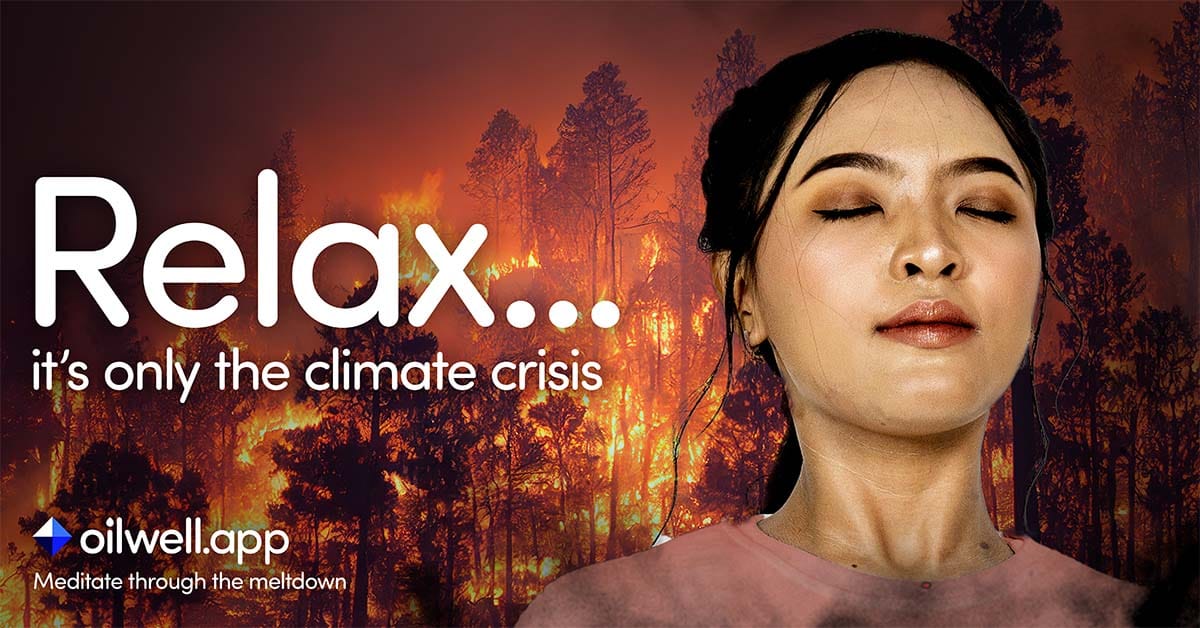
Edelman, the planet’s largest public relations agency, has previously made sensible-seeming doublespeak claims about environmental sustainability a la classics like, “The realities of climate change are evident with more frequent and devastating weather events impacting people all over the world, but institutions lack the trust to do what is right and necessary to slow the crisis.” (This is not fine.) The rallying cry for a special climate-themed edition of its signature report, the Edelman Trust Barometer, read, “Optimism is the opportunity,” which itself sounds like a parody of press release cliches. Further, Edelman himself wrote in a blog post about the 2023 report: “Our data tells us that if people distrust institutions, climate optimism is nearly impossible.” Nowhere did he mention that all the while, his company has raked in millions in cash from contracts with the fossil fuel industry, or that he’s been named among “America’s top climate villains” by The Guardian.
“We know that Edelman is going to try the classic PR trick of confusing the situation, so we want to make things really clear: if Edelman wants to be trusted on climate, they need to drop fossil fuels,” said Duncan Meisel, Clean Creatives’ campaign director, around the time of the Trust Barometer report. But like clockwork in 2024, Edelman renewed its PR contract with Shell.
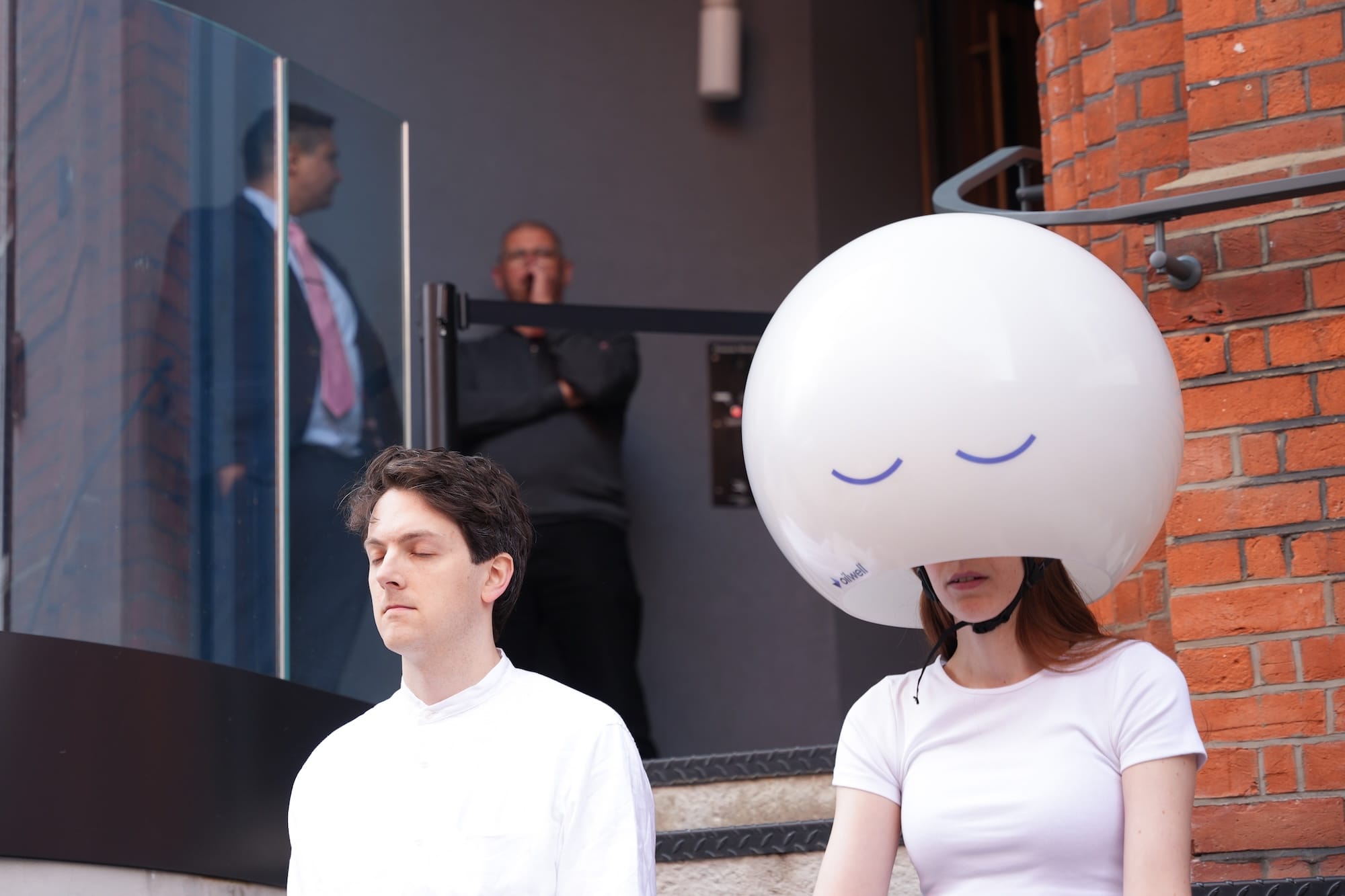
In a press release announcing the app, Frost, creative director behind Oilwell, put it wryly: “Why change the world when you can change people’s perception of it? This isn’t just the philosophy of our app. It’s the reason fossil fuel and PR companies work together.”
To promote the app, Serious People posed as Richard Edelman and sent invitations to employees and key clients. Next, they gathered on the stairs outside Francis House, home to Edelman’s London headquarters, for a live Oilwell meditation. One participant wore a glowing helmet, what the creators have dubbed “climate denial headgear.”

How creative workers can call out the anti-science, anti-climate, anti-humanity bullshit
“Big oil has big budgets and fewer morals. All we have is our creativity and some fighting spirit,” Inman tells me. And even when the odds seem stacked against creative workers, it’s worth remembering that creativity has inherent power — otherwise, those who want to spread disinformation wouldn’t invest so much money in it.
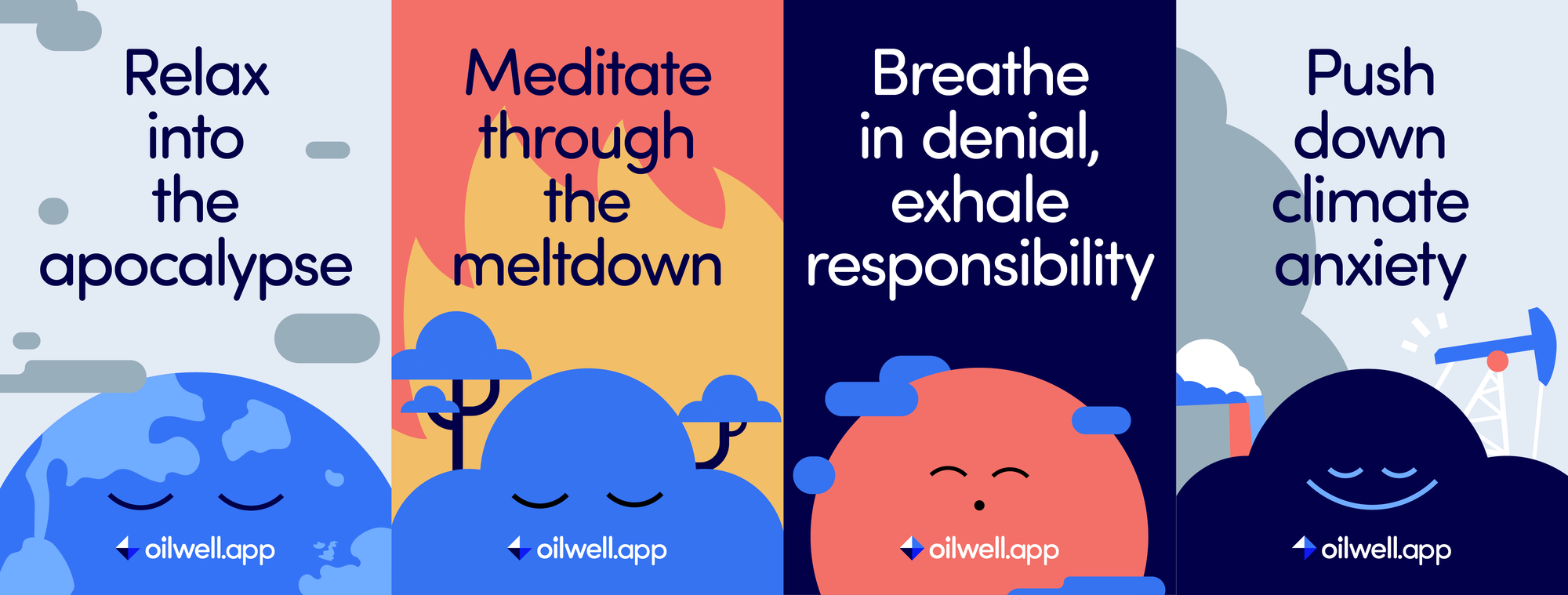
For decades, the creative industries and mass media have played a central role in greenwashing and public confusion about the climate emergency. Take BP's carbon footprint campaign from 2004, created by Ogilvy & Mather. It shifted blame from oil companies to individuals — quintessential greenwashing that’s still warping the discourse today. Two decades of carbon footprint calculators and the like have failed to meaningfully address the climate emergency, partly because of the confusion caused by this creative parlor trick.
Despite hundreds of millions of dollars in advertising and publicity work promoting a “transition” to green energy, the fossil fuel industry invests a minuscule amount of its massive revenues into renewables. The creative greenwashing has worked. By that logic, ending the greenwashing might help, too.
Indeed, every misleading message about climate change starts with a fossil fuel company working with an agency — that’s the rallying cry of Clean Creatives, a movement which has in the last five years grown to more than 1,400 agencies and 2,500 individuals pledging not to work with fossil fuel clients.
Co-founded by Meisel and supported by Fossil Free Media, Clean Creatives has one clear guiding principle: Stopping fossil fuel PR and advertising is itself part of the climate solution. That line of thinking has inspired actions such as the annual agency F-List and a campaign urging B Lab to revoke B Corp certification from agencies that work with fossil fuel clients — which resulted in Havas London losing its B Corp status in 2024 due to its work for Shell. Working for the fossil fuel industry is the new smoking.
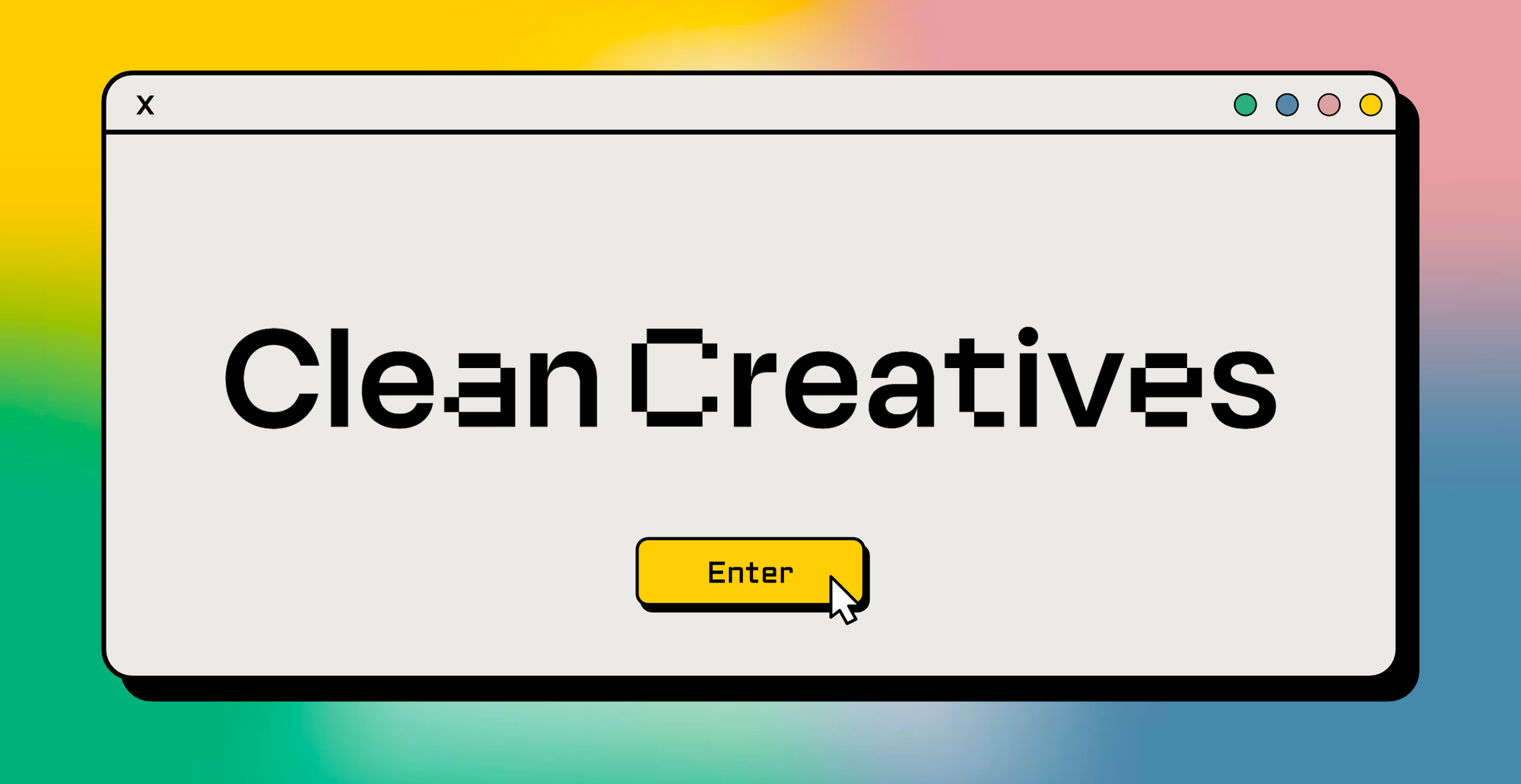
Many creative workers may never have to make an ethical choice about a fossil fuel project, but they still may find themselves working for an organization or industry that profits off of the climate emergency. And that can be an unsettling thing to grapple with, explains Ellana Sloan, a former strategist at Edelman.
“When I joined Edelman, I was really excited. I felt as though brands really had that opportunity to move the needle,” she tells me. But then a senior leader in the company flagged her work on a company newsletter, suggesting that using terms like “intersectional environmentalism” could put client relationships in jeopardy. In 2020, she took the Clean Creatives pledge, found allies within the company and started to speak up.
It was this experience in F-List agency life that inspired Sloan, now associate strategy director at the community, to team up with Drew Solomon, another ex-Edelman colleague, to create a workshop, “Call Out the BS: How to Speak Up & Push Back in Advertising and PR,” which they presented last year at New York City Climate Week. It was so popular that they’ve since turned the workshop into a resource others can present in their own communities. Last month, more than a hundred creatives attended the first online version of the event, which walked creatives through the skills they need to challenge industry complicity.
Over the last several weeks, I’ve been speaking with pledgers in the Clean Creatives network, on and off the record, about navigating the many sleepless nights that come with aligning your values with your work. In a time where fascism is on the rise, public leaders spread disinformation. and brands with no spines are quietly deleting their performative climate and human rights commitments, everyone agrees there’s never been a more crucial time to call out the bullshit.
But where do you start? Why not level one!

Level 1: The green-colored glasses come off
Laura Ranzato learned about the power of creative messaging in service of bullshit while fighting coal mines on Indigenous lands in Alaska. There was one company — Usibelli Coal — that had perfected a particularly insidious pitch, she recalls. They marketed Alaska coal as cleaner and better for the environment because it was “locally made,” as if they were neighbors selling eggs at a farmers market.
“And that message? It worked,” Ranzato tells me. “People repeated that BS back to me — not because it was true, but because it sounded like it might be.” The experience crystallized something essential about how fossil fuel companies operate: “When fossil fuel companies want something — land, water or public trust — they don’t show up with facts. They show up with strategy. With creatives who know how to make an idea land.”
That insight is what fuels Clean Creatives, where Ranzato is organizing director and a consultant.
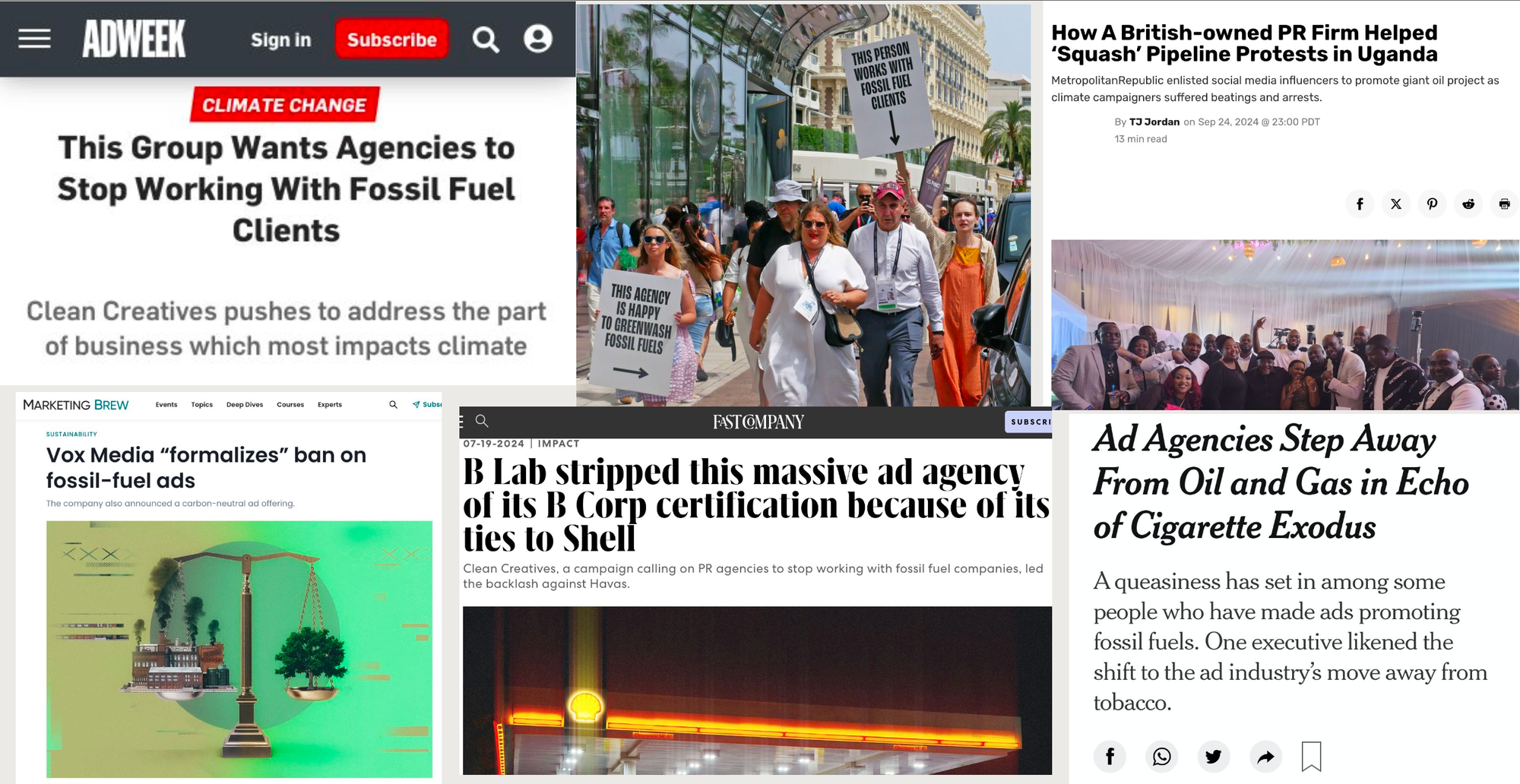
But first, the movement had to watch those same companies abandon even the pretense of caring about the climate transition.
Throughout the last few years, but especially in early 2025, amid the regime change in the United States, evidence mounted that major oil companies were retreating from their earlier climate commitments. BP, which had once set an ambitious goal among oil majors to reduce oil production by 40% by 2030, quietly lowered that target to 25% before signaling an even sharper pullback from renewable energy investments. Shell followed a similar path, scaling back its green initiatives while increasing oil and gas production. More than two decades after BP became the first major oil company to publicly acknowledge climate change, the industry appeared to be signaling a clear shift away from its previous climate ambitions.
In other words, now they’re hardly pretending to care about science. “The green-colored glasses are off,” as the“Call Out the BS” workshop framed it at NYC Climate Week. Fossil fuel companies are openly working against the transition, not facilitating it.
The anti-science bullshit has also coincided with a broader retreat from human rights and diversity across corporate America, which, yet again, was brands simply showing their true colors. In January, for instance, Amazon quietly removed sections such as “equity for Black people” and “LGBTQ+ rights” from its website and scrubbed mentions of marginalized folks from its public policies. Google, too, removed references to diversity and inclusion from investor reports. Meta disbanded its entire DEI team and ended its affiliated programs. McDonald’s, Target, Walmart, Disney — the list kept growing.
“It feels like brands are really showing their cards,” says Sloan, who left her strategy role at Edelman in 2021 after watching the world’s largest PR firm navigate similar contradictions. The rollbacks weren’t separate phenomena but part of the same calculus: As political winds shifted, companies that once competed to showcase values began treating them as liabilities.
It may not be that surprising to find out that many in positions of power never really cared. Clearly, centering corporate actors in movements has amounted to things like, say, pinkwashed fast fashion produced by workers who weren’t paid living wages, to name only one example of rainbow capitalism’s absurdities. The point is not a return to Pepsi ads with Kendall Jenner or empty “sustainability” speak that’s ultimately greenwashing. That was never the point. The point, all along, has been to hold people in power accountable.
And the first step toward calling out such bullshit, it turns out, is being clear eyed about just how much of it there is.

Level 2: Build your bullshit radar — and see bullshit everywhere
The realization that your industry is complicit in planetary destruction can, at first, let the wind out of your sails a little. But Clean Creatives pledgers tell me that the sense of overwhelm serves nobody but the powerful. The antidote requires we recognize their manipulative patterns and mind tricks.
When Sloan joined Edelman’s sustainability efforts, the focus was almost laughably narrow, she recalls. “We had started the green team and we'd been kind of improving our report card, but it was very much through the lens of like, ‘Are we printing on both sides?’” It did not ever extend to client vetting.
The gap between office recycling and client strategy was largely intentional. Corporate sustainability has become an elaborate shell game, where companies spotlight incremental improvements while ignoring their most destructive work.
Activists have developed a taxonomy for these tactics. Greenlighting means spotlighting minor green initiatives to distract from major harms — like that car commercial emphasizing fuel efficiency while the company lobbies against emissions standards. Greenshifting blames consumers for corporate choices — think oil companies’ campaigns about individual carbon footprints while they expand drilling operations. Greencrowding hides behind industry-wide mediocrity (“everyone else does it too”).
The playbook gets more sophisticated: greenlabeling calls something sustainable when it’s not, greenrinsing changes ESG targets before they’re achieved, and greenhushing under-reports sustainability credentials to evade scrutiny.
This can help you know when a potentially greenwashed brief comes across your desk. For independent studios, it can even help you more effectively team up with the right kind of clients. That’s the case with Wholegrain Digital, a London-based web design firm founded by Tom and Vineeta Greenwood. It’s the shop behind the Sustainable Web Manifesto.
“To stay true to those values, it really does matter who we work with.”
They’ve built their entire business model around an ethical screening criteria. The process automatically disqualifies clients involved in fossil fuels, tobacco, arms or other prohibited industries. And it opens up generative conversations with clients in gray areas.
“The values of our agency are rooted in doing good work that does not harm the planet or people, thus to stay true to those values, it really does matter who we work with,” says Bailey Bryan, the firm’s new business manager.
The screening process isn’t ethical theater as much as a way to preserve the team’s energy for the work that drives their bottom line. “It means we have frank conversations early, and it establishes a partnership right away with companies that weave purpose into their business model,” Bryan notes. “For those we are not aligned with, it means we don’t spend resources on pitches or projects that were never going to be the right fit to begin with.”
Once you know what to look for, the bullshit becomes impossible to ignore. That can, in turn, help you more quickly find your people.

Level 3: Find allies and work together
Drew Solomon knows what it is like to feel alone in a room where no one else wants to admit the emperor has no clothes. Early in his career, he recalls an agency event where leaders celebrated their client in the tobacco industry: “I remember people applauding and cheering and me feeling like, this is so so strange. Why are we applauding and cheering for building a cigarette brand into something huge? That was so viscerally odd.”
Simply declining the client projects started to feel like it wasn’t enough. “I reached a point where I was like, I don’t think it’s enough that I just say I’m not going to work on tobacco and I’m not going to work on private prisons and I’m not going to work on fossil fuels,” he tells me. “What we need is for these behemoth agencies who control all of the world’s communication, all of the world’s marketing and all of the world’s advertising to stop doing these things. To stop entirely.”
This is when you need to find your people. “Initially, there can be an incredible isolationism, which is so strange because, of course, I know I’m not the only one in my entire company who believes we have to save our habitable climate,” he says. “But it’s just not completely confirmed until you meet your people. It’s a very hard place to be in, at first.”
Solomon learned what organizers teach: “You have to find someone else to do it with you and you have to find a group to do it with you,” he says. While working at Edelman, his breakthrough came when he connected with people like Sloan. Suddenly, he had company. Eventually, they both moved out of Edelman into other agencies — Solomon is now senior vice president of paid social at Horizon Media. But they have continued their vocal advocacy through Clean Creatives and other avenues, as well.
Last year, when they presented the “Call Out the BS” training at NYC Climate Week, Sloan experienced what she calls a “heartening moment.” The abstract idea of community becomes a concrete reality when people show up. “We talk about the fact that we’re all trying to do something, but to physically see people show up — to see the manifestation of it in that room — was really encouraging. It was a good reminder that we have a voice.”
The first move can be small: Start with one ally. Maybe that colleague who rolled their eyes during a greenwash-y presentation. The strategist who asked a sharp question in that client briefing. Or the designer who seems quietly frustrated with the problematic pitches.
These conversations often begin tentatively. But once you find your people, Solomon and Sloan discovered, the work becomes not just possible but energizing.
The movement grows one conversation at a time.

Level 4: Practice the art of strategic questions
The fossil fuel industry has spent decades convincing people that climate activism requires an advanced degree. It’s a convenient myth that keeps uncomfortable questions at bay, which means it’s time to raise them.
“Fossil fuel companies and their facilitators love to suggest, if you're not a scientist and you don’t have a PhD, you don’t have a right to talk about climate change,” Solomon says. “That has trickled down into our colleagues and people at agencies.”
But calling out corporate contradictions only requires skeptical curiosity. “You don’t have to have any expertise. All you need to know is that agencies say they’re working on facilitating a transition from fossil fuels. But oil companies have no planned transition. It’s that simple and it’s that clear.”
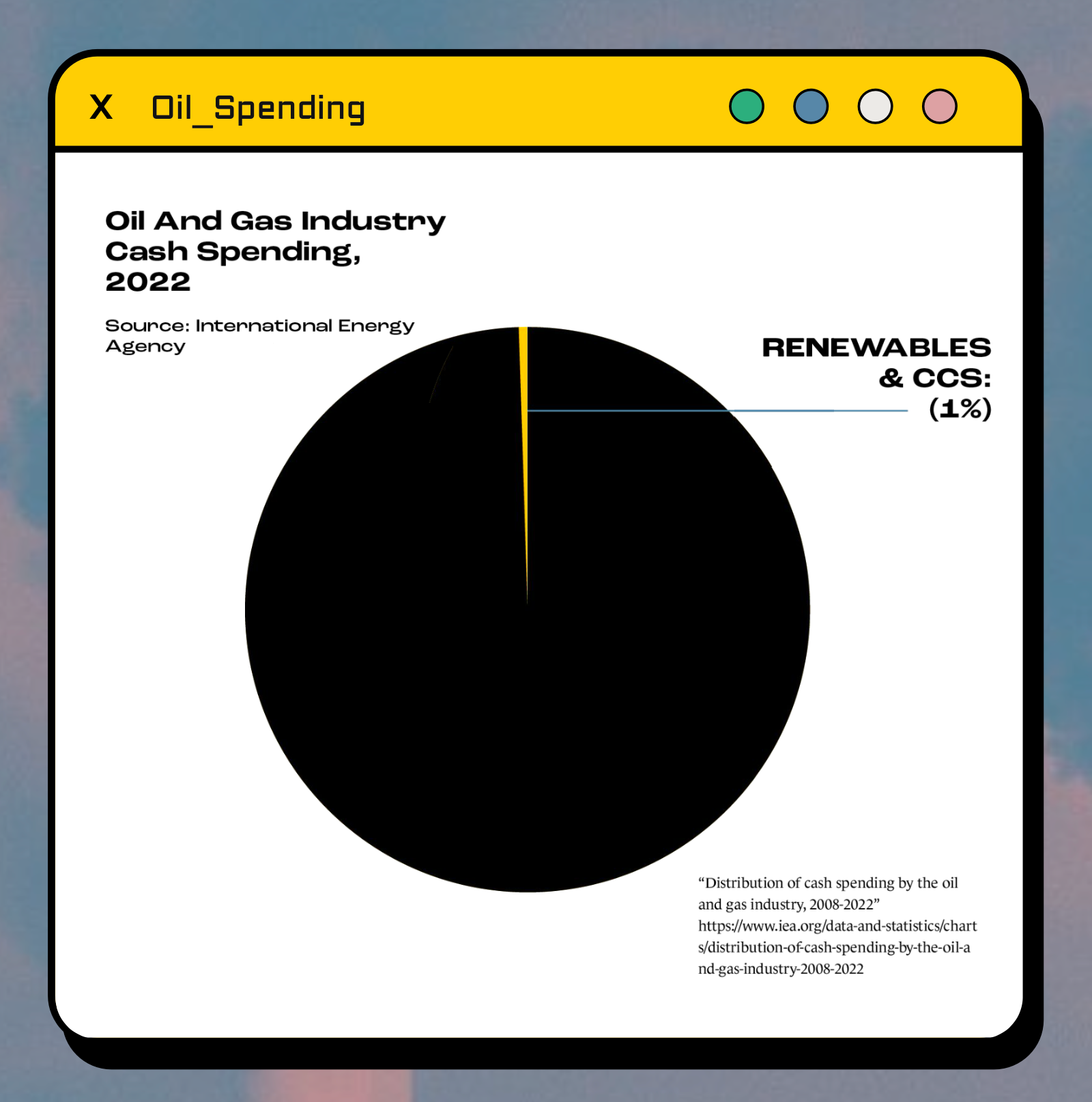
Sloan suggests you can start small by finding opportunities to ask questions. “How can the questions you’re asking in those rooms — client briefings, kickoffs — at least start to make bells go off in other people’s heads?” she asks.
For instance, you might ask how a company’s climate commitments align with their actual investments. Question whether “transition” work actually involves any measurable shift away from fossil fuels. Challenge feel-good sustainability messaging by requesting concrete data on, say, scope three emissions — the indirect impacts that many companies prefer to ignore.
The goal isn’t to become a climate scientist overnight. It’s to become comfortable asking the questions that everyone’s thinking but no one wants to voice.

Level 5: Performance and courage
The moment arrives faster than you might expect, and few people acknowledge the psychology of it. You’re in a company town hall, a client briefing or a strategy meeting, and suddenly the opportunity is there — a chance to ask the question that’s been gnawing at you for months. Solomon knows the feeling well.
“We have to acknowledge that there is fear, how scary it is to speak up. I am scared, yes. I’ve had to go outside and catch my breath when I knew I was going to say something ‘controversial,’” he says.
Yet something shifts once you actually do it. He and Sloan emphasized to me that calling out bullshit is as much about skills you learn as it is about having the right words. In person, it requires presence, projection, eye contact. They can be the difference between being heard and being dismissed. And they’re skills anyone can learn and feel better about practicing.
Once you push through, it becomes easier. “What I wish people knew is how liberating it is to speak the truth alongside your community, how good that feels on the other side.” Solomon reflects. He and Sloan would ping each other after particularly tense meetings: “That felt so good.” The relief was palpable. Finally using your voice instead of swallowing your convictions.
But Solomon is also clear-eyed about who gets to take these risks. “I acknowledge my privilege. I am employed. I have a salary, I have health insurance, I have benefits. And so it is my responsibility to speak up for others and speak up for those who don’t have those things.”
This reality check matters. In this economy, several freelancers I spoke to while working on this piece expressed off the record that they would, of course, be open to signing a pledge to not work with fossil fuel clients. But they also worried that if they got too vocal with their activism, they might be dismissed from the work they need to pay this month’s rent.
The candid conversations I’ve had underscore the power differential between the CEOs of the big agencies and the creatives, strategists, planners, researchers, account executives and all the other cogs it takes to make the industry’s machines run. Yet, as Clean Creatives shows, movements work when people contribute what they can — whether that's speaking up in meetings, taking the pledge, or simply refusing complicit work.
“The climate experts are not always the most creative communicators. They need you! We need you!”
Those with the most job security have the most obligation to use their voices. The alternative is complicity dressed up as pragmatism. “Our colleagues sometimes get stuck on that hard question, what can I do? There’s, of course, something you can do. You can speak up, find your people, create momentum and do something about it.”
“All I have is my voice. And all you have is yours,” he concludes. “Whether you use it in your community or with your government or with your employer, being able to use your voice and speak your mind and speak the truth really overrides that fear in the end.”

What if you don’t want to create a spoof wellness app?
I, for one, slept better when I stopped using the Oilwell app. One night of that misery was enough for the anecdotal introduction to this article.
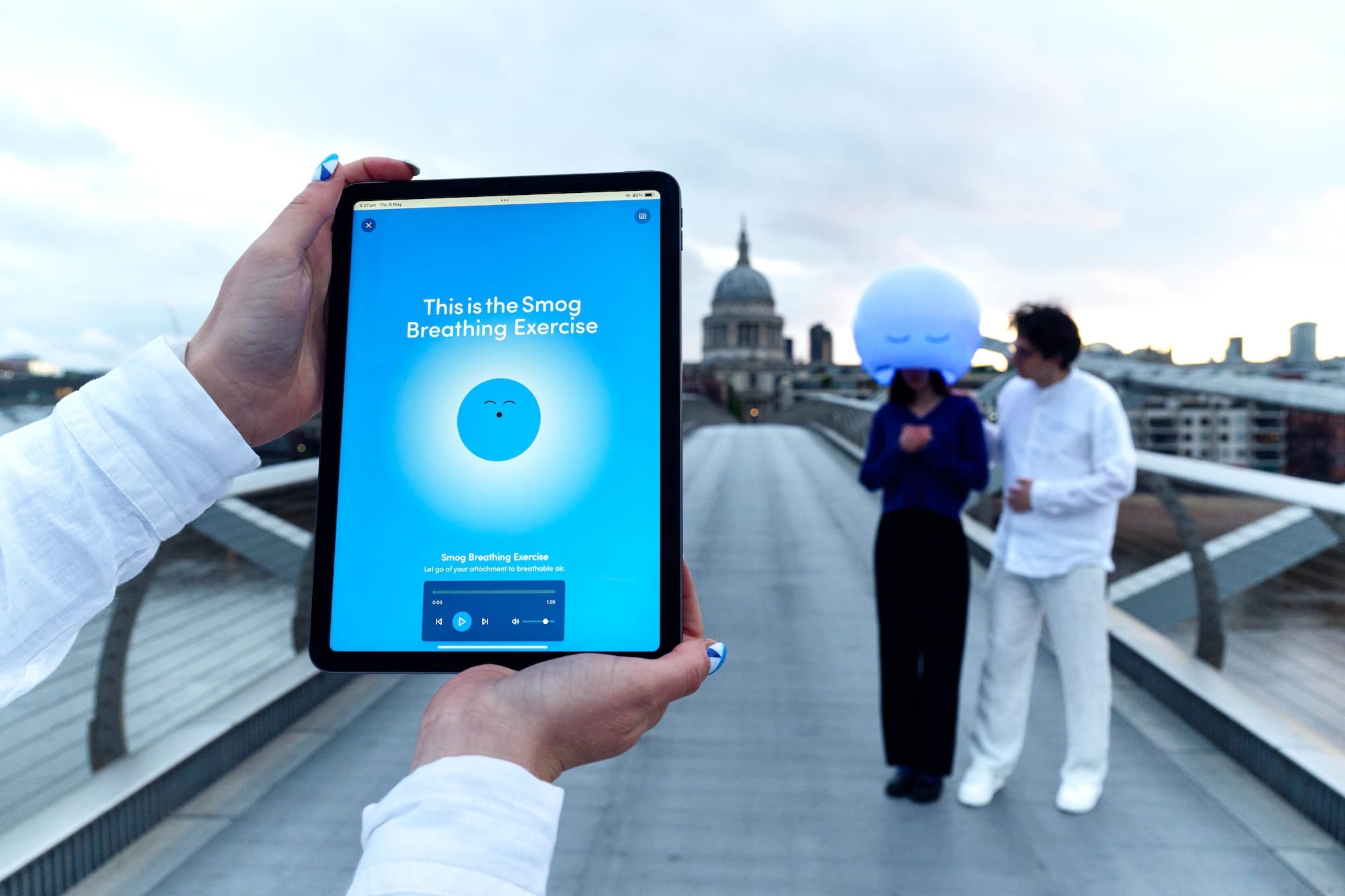

Serious People activists demonstrated the Oilwell app on London's Millennium Bridge, complete with "climate denial headgear" and satirical meditation sessions targeting Edelman's fossil fuel PR work.
But throughout my reporting, I kept finding myself circling that question, how well does Richard Edelman sleep? But really?
Therefore, I sent the following email to give Edelman an opportunity for him to weigh in, and I will update you with any response I get from him or his team.
Greetings!
I am a journalist working on an article for ESC KEY .CO, the only lifestyle newsletter on the internet, and I mention Edelman’s work for the fossil fuel industry.
I had a few super quick questions:
- Is CEO Richard Edelman aware of the Oilwell app?
- If yes, has Richard followed any of the guided meditations?
- I would also like to know if Richard has tried the sleep mixer? The reason is, in the article I’m writing, I mention how I tried to sleep with the sleep mixer turned on, and I found it very unpleasant, so I was wondering if Richard had a similar experience, or any thoughts on how well he sleeps, in general?
I would be more than happy to invite Richard to do an interview with ESC KEY .CO, and if he would like to take this moment to announce Edelman canceling contracts with fossil fuel companies, I can add that into the article, no problem. (If he did announce that in an interview with me, it could also be a great boost to my traffic. And as a new publication, I would sincerely appreciate the boost!) So, do let me know!
After all, there is no lifestyle on a burning planet.
And, as Richard has written, no climate optimism without trust.
Sincerely,
JD

I'll admit. This kind of email is like maybe a level two activity. But no matter the level you engage at, it’s likely you’re also going to sleep better knowing that you’re doing something in your control.
“There’s power in laughter to reconnect us with uncomfortable truths, to bring us together, to rally our spirits in the face of a crisis that is quite overwhelming,” Inman of Serious People tells me.
“The climate experts are not always the most creative communicators,” he adds. “They need you! We need you!”
